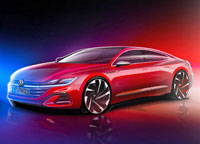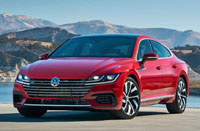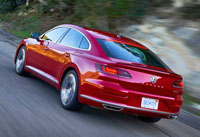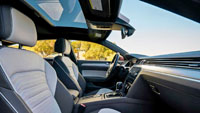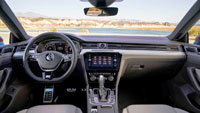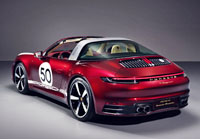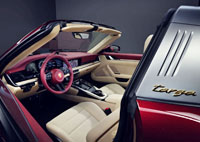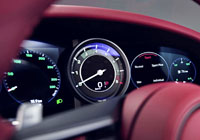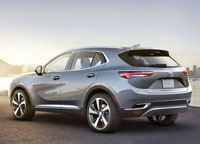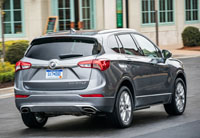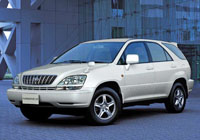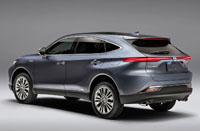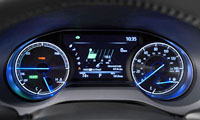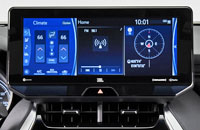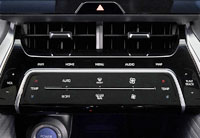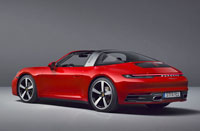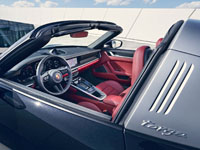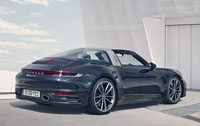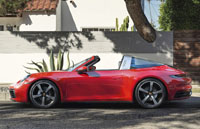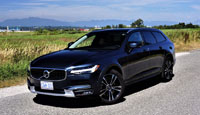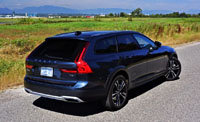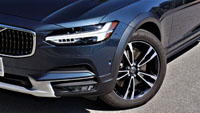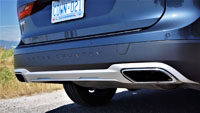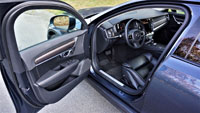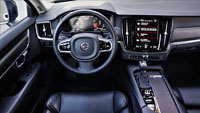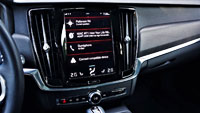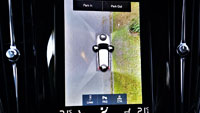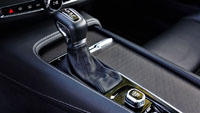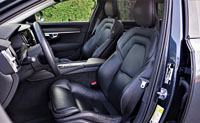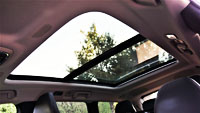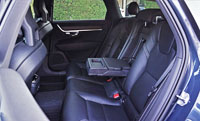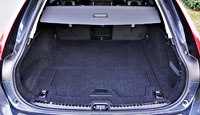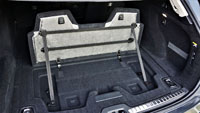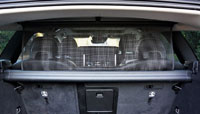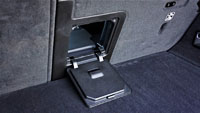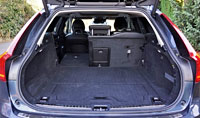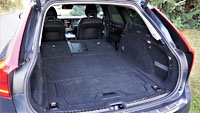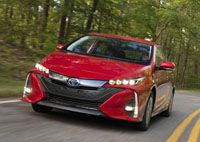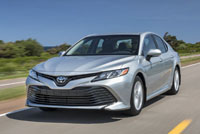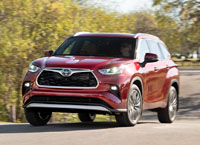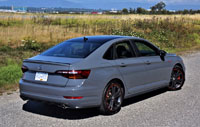
After eight long years of the sixth-generation Jetta, Volkswagen introduced a ground-up redesign for the 2019 model year and Canadian compact sedan buyers responded by boosting the model’s sales by 14 percent. That’s a good news story for VW Canada, but 17,260 units in 2019 is a far cry from the car’s high of 31,042 deliveries in 2014.
All we need do to understand this scenario more clearly is compare the VW Tiguan’s sales of 10,096 units in 2014 to the 19,250 sold in 2019 (which was actually down 10 percent from the 21,449 examples sold in 2018), and thus we see another example of crossover SUVs encroaching on the conventional car’s traditional territory.
As VW fans will already be well aware, the German brand controls more of the compact segment than the Jetta’s sales indicate on their own. Most rivals, including Honda’s best-selling Civic, Toyota’s second-rung Corolla, Hyundai’s third-place Elantra, and the list goes on, combine multiple body styles under one nameplate. This was true for VW’s fifth-place Golf for the 2019 model year too, and previously when available as a Cabriolet, but with the SportWagen being cancelled for 2020 the little hatchback moves forward with just one profile shape. Speaking of that Golf, if its 2019 calendar year sales of 19,668 units were combined with the Jetta’s aforementioned total, created one collective whole, VW would no longer sit in fifth and sixth places respectively, but instead jump past Mazda’s 21,276 unit-sales with a new compact total of 36,928 deliveries. That puts the Golf/Jetta combo mighty close to the Elantra’s 39,463 deliveries.
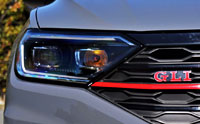
OK, I got a little carried away with numbers, as I sometimes do (just be glad I didn’t add the 3,667 Ioniq and 1,420 Veloster sales to Hyundai’s 2019 calendar year mix, or the 2,910 now discontinued VW Beetles), but you should now have a better understanding of the situation. Volkswagen continues to be a serious player in compact arena, and the Jetta is a key component of its mostly two-pronged (so far) approach in this market segment. This said, VW has done compact performance better than most of its rivals for a lot longer, with entries like the iconic Golf GTI and hyper-fast Golf R playing it out in the hot hatch sector, and the Jetta GLI being reviewed here pushing VW’s agenda amongst affordable sport sedans.
Yes, Honda deserves kudos for its long-running Civic Si (now with 205 hp) that arrived in 1985 as the CRX Si and in regular Civic form for 1988, and currently puts out a beastly compact sport hatch dubbed Type R (306 hp), which is a similar combo to Subaru’s legendary WRX (268 hp) and WRX STI (310 hp) twins, while Mazda’s less formidable yet still respectable 3 GT is in the mix (186 hp—how we miss the Mazdaspeed3, but there is recent talk of Mazda’s 250-hp turbo 2.5 with 310 lb-ft of torque improving 3 performance), but the South Koreans have recently been stepping up competition with sporty alternatives of their own, respectively including the Elantra Sport (201 hp) and Kia Forte GT (201 hp) that actually use identical powertrains and ride on the same platform architecture. While this is good news for performance fans, Ford recently nixed its fabulous Focus ST (252 hp) and sensational Focus RS (350 hp) along with their entire car lineup (sacrificed to the crossover SUV), Mustang coupe and convertible aside, showing some come and some go. Yes, there’s something to be said for honest to goodness longstanding performance heritage, and the Jetta’s three-letter GLI acronym beats all rivals excepting the GTI in the test of time, with its 1984 inception resulting in 36 years under its belt.
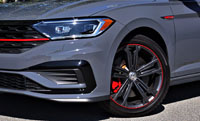
To its advantage, the new Jetta GLI is one good looking sport sedan. Those who might be turned off by Honda’s boy-racer Civic Si design and Subaru’s rally-ready WRX look should gravitate to the sporty VeeDub thanks to its more discreet appearance. The usual blackened exterior trim is once again joined by tasteful splashes of red accenting key areas, this latest version getting a red horizontal divider across its grille as well as big red brake calipers framed by special red trim circling each of its dark grey 18-inch wheels. Of course, the front and rear “GLI” badges are doused in bright red as well, as is a really attractive set of front fender trim pieces that boast this GLI 35th Edition’s unique designation.
As far as the GLI’s glossy black trim goes, there’s a thick strip along the top portion of the grille, plus more of the inky black treatment surrounding the lower front fascia’s corner vent bezels, painting the side mirror housings, finishing the front portion and rear portions of the roof, and coating the tastefully small rear deck lid spoiler. It’s a real looker from front to rear, and more importantly for people my age (let’s just say above 50), the type of compact sport sedan that won’t make you look like you’re trying to relive your glory days when seen behind the wheel.
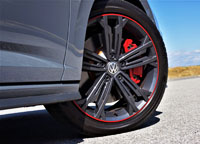
As expected in any performance-tuned VW, the GLI includes a well-bolstered, comfortable set of perforated leather front seats. They’re highlighted with sporty red contrast stitching and attractively patterned inserts, for a look that’s simultaneously sporty and luxurious. What’s more, the steering wheel is downright performance perfection, featuring a slightly flat bottom section and ideally formed thumb indentations, plus red baseball-like stitching around the inside of the meaty leather-wrapped rim. VW continues the cabin’s bright red highlights with more crimson coloured thread on the leather gear lever boot, plus the centre armrest, the “GLI” portion of the model’s “GLI 35” seat tags, as well as the identical logo on the embroidered floor mats and stainless-steel sill plates.
There’s also a fair share of satin-silver aluminum trim around the cabin, including the previously noted steering wheel’s spokes, the foot pedals, various switches and accents on the centre stack and lower console, plus more. Additional trim worth noting include a small dose of fake carbon-fibre and larger sampling of piano black lacquer on the dash and upper door panels, whereas the former area is wholly soft-touch due to a premium-like composite that wraps down to the instrument panel ahead of the front passenger, before this premium treatment continues to the front door uppers, inserts and armrests.
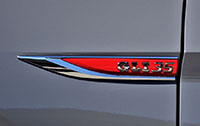
While all of this luxury-level pampering sounds good, I’m quite certain most would-be buyer’s eyes will be find the standard digital instrument cluster even more appealing, at least at first sight. If you’ve seen Audi’s Virtual Cockpit you’ll know what I’m talking about, although VW calls theirs a Digital Cockpit. Similarly to the fancier German brand, the GLI’s Digital Cockpit includes a “VIEW” button on the left-side steering wheel spoke that transforms the cluster’s look from a traditional two-dial layout with a multi-function display in the middle to a massive MID with tiny conventional gauges below. This is looks especially good when filling the MID with the navigation system’s map, and makes it easier to glance down for directions than when on the centre display. The Digital Cockpit can do likewise with other functions, resulting in one of the more useful electronic components currently available from a mainstream brand.
The Jetta GLI’s centre touchscreen is a big 8.0-inch display boasting high-definition resolution and bright, colourful graphics with rich visual depth and contrast, while just like the primary instrument package it comes well stocked with features such as tablet-style tap, pinch and swipe gesture controls, Android Auto, Apple CarPlay, and Mirror Link smartphone integration, audio, navigation, application, driving mode and fuel-saving eco “pages”, plus finally a performance driving interface with a lap timer and more.

Strangely, active guidelines are not included with the backup camera, which is a bit odd for the GLI’s top-level trim, which included an available $995 ($1,005 for 2020) Advanced Driver Assistive Systems (ADAS) upgrade bundle featuring a multi-function camera with a distance sensor. This package also adds Light Assist auto high beam control, dynamic cruise control with stop and go, Front Assist autonomous emergency braking, Side Assist blind-spot monitoring with rear cross-traffic alert, and Lane Assist lane keeping capability.
An attractive, well-organized and easy to use three-dial dual-zone auto climate control interface sits just below the infotainment display on the centre stack. It includes switches for the GLI’s standard three-way heated and ventilated front seats, the former warm enough for therapeutic lower back pain relief and the latter helpful for reducing sweat during hot summer months, while under this is an extremely large and accommodating rubber-based wireless device charger as well as a USB-A charging port.
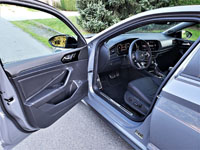
A gearshift lever with a sporty looking metallic and composite knob and aforementioned red-stitched leather boot takes up its tradition spot on the lower console between front occupants, surrounding by an electric parking brake, traction control and idle-stop system defeat buttons, plus a driving mode selector that lets you choose between Eco, Comfort, Normal, Sport and Custom settings.
Speaking of centre consoles, the overhead one above houses a handy sunglasses holder as well as switchgear for opening the big power glass sunroof that also includes an opaque fabric sunscreen with an upscale aluminum handle.
And so it should, as the GLI, starting at $32,445 plus freight and fees for the manual, or $33,845 for my as-tested DSG dual-clutch automated model, is starting to encroach into low-end premium territory. Fit, finish, materials tactile quality and overall refinement is only so-so, however, not even measuring up to VW’s own Golf GTI. It used to be that a Jetta was merely a Golf (or Rabbit) with a trunk, the latter useful for mitigating inner-city security risks, but now the two cars look totally different other than the badge on their grilles and backsides and a handful of cross-model components.
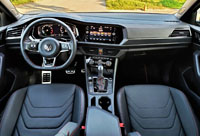
The base 2019 Golf GTI is available from $30,845 (and when I recently checked plenty were still available in Canada, probably due to the health situation that I don’t want to name due to being negatively flagged by search engines, etcetera) and $850 less than the $31,695 entry-level Jetta GLI, but the sporty VW hatchback boasts fabric-wrapped A pillars, just like its more affordable Golf counterparts, while no Jetta, including this GLI, gets this semi-premium treatment. All of the Jetta’s hard composites below the waist, and some of them above, don’t feel all that substantive either.
Certainly, we need to factor in the Jetta’s compact status, an entry-level model for Volkswagen that doesn’t sell a subcompact car in North America, but such is not the case for its main rivals that are seeing this compact segment as a growing alternative for those who might have otherwise purchase a mid-size sedan or wagon. The fact is, rivals from Japan and Korea are packing more soft-touch luxury and premium features into their smaller cars, and winning over buyers who want to be pampered instead of punished for choosing a more environmentally conscious small car. Just get into a fully loaded Mazda3, Toyota Corolla or Kia Forte and you’ll quickly figure out what I’m talking about. They’re delivering at a high level, and deserve to attract new buyers that aren’t being gobbled up by the Civic, the Corolla and Elantra.
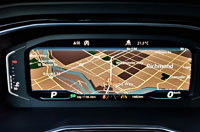
The shame is VW used to lead in small car refinement, to the point that previous Jettas were probably too good for this segment, even starting to be uncomfortably compared against the automaker’s own Audi A4. Therefore, anyone trading in their 2005–2011 fifth-generation Jetta for the current version, whether trimmed out to top-line GLI spec or not, will probably find the cabin’s finish and materials quality less than ideal.
By the way, I tested a new Forte GT recently, and have to say it does a good job of competing against old guard sport compacts like this GLI and Honda’s Civic Si, but unlike this car the Forte’s rear door panels were finished to the same high-quality, soft-touch level as those up front, whereas none of the above can be found on the GLI’s rear door panels. I can’t think of another car in this class that misses the mark so blatantly in this respect, and call for VW to step things up before it completely loses its reputation for tactile quality.
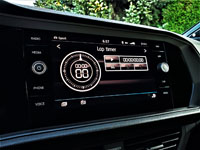
This said, a set of heated outboard rear seats would’ve been much appreciated by rear passengers mid-winter, not that these aren’t offered by competitors, but once again the panel surrounding the three-way buttons was about as primitive as this class provides. The seats were comfortable and supportive, mind you, as well as attractive due to the same red stitching and perforated leather as those in the front, not to mention sculpted backrests in the outer window positions. A decent sized folding rear centre armrest includes cupholders, but unlike Jettas that came before there’s no cargo pass-through door behind for stuffing long items such as skis. This means you’ll have to lower the 40-percent side of the 60/40-split rear seatbacks when four people are on board, forcing one rear occupant into the less comfortable middle seat, and making the rear seat warmer on that side redundant when that rear passenger will want it most. On the positive, the trunk is large at 510 litres, and could potentially house shorter skis diagonally as well as snowboards. Of course, the Jetta is not alone in choosing less costly 60/40 split-folding rear seatbacks, but the Golf offers the centre pass-through and therefore is the better choice for active owners.
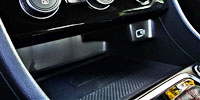
A few minutes behind the wheel and you’ll quickly forget about such shortcomings, however, as the GLI is a blast to drive. Truly, this sport sedan is one of the most enjoyable to drive within its mainstream volume-branded compact sedan class, thanks to a new 228 horsepower 2.0-litre turbocharged four-cylinder engine with 258 lb-ft of torque. That’s an increase of 18 horsepower and 51 lb-ft over the GLI’s predecessor, incidentally, and due to only being available with front-wheel drive the motive wheels/tires have a habit of squealing during quick takeoffs. Certainly, there’s traction control, as noted earlier, but it comes on a bit too late to stop any noisy commotion from down below, so you’ll need to restrain your right foot in order to maintain civility and not engage any police intervention.
The GLI’s new seven-speed dual-clutch automated DSG transmission is as important an upgrade as the engine’s newfound power, and feels even faster between paddle shift-actuated gear intervals than the previous model’s six-speed unit, while gaining a taller final gear to improve fuel economy (it’s rated at 9.6 L/100km in the city, 7.3 on the highway and 8.5 combined with the six-speed manual and a respective 9.3, 7.2 and 8.4 with my tester’s A7 DSG auto).
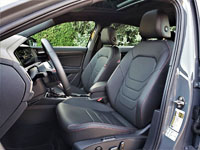
While the new GLI is nowhere near as fast as the aforementioned Golf R, or some of that model’s equivalently quick super-compact competitors such as Subaru’s WRX STI and Mitsubishi’s awesome EVO X (RIP), it’s more than respectable amongst mid-range sport models like the Civic Si, while making wannabe performance cars like the Mazda3 GT feel as if they’re standing still. Momentary burnouts during takeoff aside, the new Jetta GLI was unflappable when pushed hard through high-speed curving sections of backcountry two-lane roadway, even when pavement was so uneven that the car’s rear end should’ve been hopping and bopping around the road. Fortunately, unlike that top-tier Mazda3 and VW’s more pedestrian Jetta trims below that use a torsion-beam rear suspension, the GLI includes a multi-link setup in back, which absorbed jarring potholes and other road imperfections with ease, allowing most of the stock 225/45 Hankook Kinergy GT all-season tires’ contact patches to remain fully engaged with the road below. To be fair to the Mazda3, it’s surprisingly stable during such otherwise unsettling circumstances due to available AWD with G-Vectoring Plus.
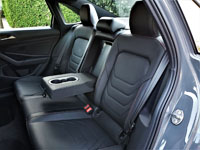
Back in the city, the GLI’s idle-stop system shut off the engine when the car came to a stop amid parallel parking manoeuvres. This wouldn’t normally be a problem, as it should quickly reignite the engine when lifting off the brake, but while I was purposely parked too close to the vehicle ahead in order to straighten the car out, it wouldn’t restart while in reverse. This necessitated shifting back into park and then pressing on the throttle to wake up the engine, and then shifting back to reverse before aligning the car. This is probably a software glitch, but I’d be complaining to my dealer if it persisted. Fortunately, I experienced no other instances of this happening, but remember I only live with test cars for a week at a time.
The previously noted $32,445 (for the base manual) and $33,845 (for the DSG auto) base prices meant the 2019 GLI 35 is nicely equipped, with items not yet covered including fog lamps, LED headlights, proximity entry with pushbutton start/stop, rain-sensing wipers, an auto-dimming rearview mirror, a potent 8-speaker BeatsAudio system with a subwoofer, a power-adjustable driver’s seat with two-way powered lumbar and three-position memory, and the list goes on. The same goes for the 2020 model, by the way, as there haven’t been any changes except for the discontinuation of this model year-specific 35th Edition.
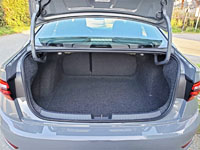
Speaking of model years, VW Canada will give you up to $3,000 in additional incentives on a 2019 Jetta (which remained available when this review was written), while the new 2020 GLI can be purchased with $1,000 in additional incentives, although keep in mind that CarCostCanada member savings averaged $2,500 for the newer 2020 model. To learn more, see our 2020 Volkswagen Jetta Canada Prices page and/or 2019 Volkswagen Jetta Canada Prices page, where members can find out about manufacturer rebates, leasing and financing deals, plus dealer invoice pricing that could add up to even more savings. What’s more, you can now download our free CarCostCanada app from Google Play Store or Apple iTunes/App store so you can have all of our important info in the palms of your hands when negotiating at the dealership, whether purchasing this Jetta GLI or any other new vehicle sold in Canada.
In the end, I can’t help but like the new Jetta GLI, even despite its less than ideal shortcomings. It looks great, takes off like a scared rabbit (GTI) when called upon, and is filled with most of the features premium car buyers are learning to expect. Yes, I’d prefer if Volkswagen improved some of the Jetta’s touchy-feely interior surfaces, but being that most owners will spend all of their time up front in the driver’s seat, it’s shouldn’t be a deal-killing issue.
Story and photo credits: Trevor Hofmann
Photo Editing: Karen Tuggay

